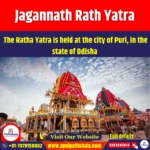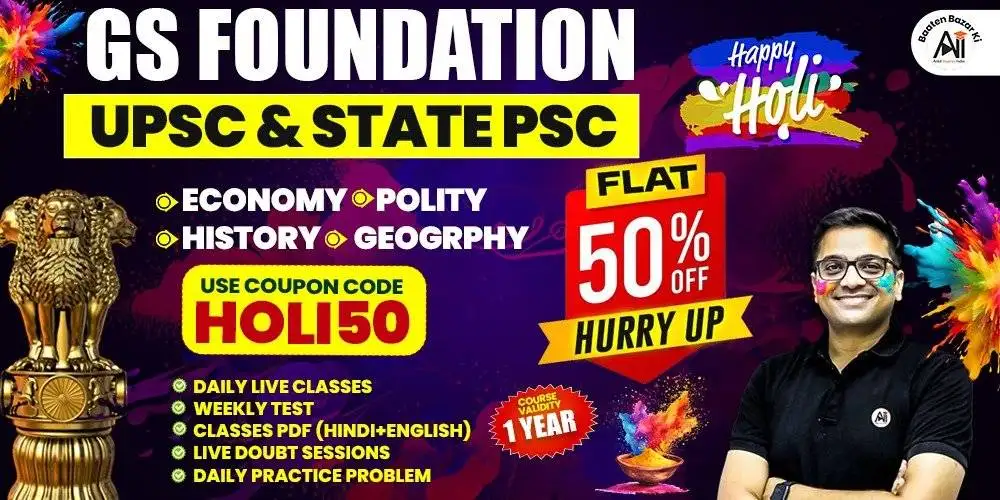GS Paper II: Judgments & Cases, Representation of the People Act, Parliament |
Why in News?
Electoral Reforms in India: Concerns have risen over alleged manipulation of voter lists and identical Elector Photo Identity Card (EPIC) numbers in different states during the recently concluded assembly elections. To address these issues, the Election Commission of India (ECI) has invited political parties for discussions aimed at strengthening the electoral process.
Key Legal Provisions Governing Elections in India
India’s electoral process is governed by various legal provisions to ensure smooth and fair conduct of elections.
- Article 324 of the Constitution grants the Election Commission of India (ECI) the authority to supervise, direct, and control elections for Parliament and State Legislatures. This includes the preparation of electoral rolls and overseeing the entire election process.
- The Representation of the People Act, 1950, defines the roles of election officials such as the Chief Electoral Officer, District Election Officer, and Electoral Registration Officers. It also governs the preparation and maintenance of electoral rolls for parliamentary, assembly, and council constituencies.
- The Representation of the People Act, 1951, regulates the pre-election process, including the preparation and maintenance of electoral rolls. To ensure its effective implementation, the Registration of Electors Rules, 1960, provides detailed guidelines for adding, correcting, or deleting names in the electoral rolls.
Major Electoral Reforms in India
- Before 1996
- Model Code of Conduct (1969): Guidelines were introduced to regulate political parties and candidates before elections, aiming to curb the influence of money, casteism, communalism, and corrupt practices.
- Anti-Defection Law (1985): To prevent political instability due to party-switching, the 52nd Constitutional Amendment Act, 1985, introduced the Tenth Schedule, which disqualifies legislators who defect from their party.
- Lowering of Voting Age (1988): To increase youth participation in politics, the 61st Constitutional Amendment Act, 1988, reduced the minimum voting age from 21 to 18 years.
- Strengthening Local Governance (1992): To promote democratic decentralization, the 73rd Constitutional Amendment Act, 1992, gave constitutional status to Panchayats and introduced direct elections at the local level.
- Introduction of Electronic Voting Machines (EVMs) (1989): To make the voting process more transparent and efficient, EVMs replaced traditional ballot papers. Later, Voter Verified Paper Audit Trail (VVPAT) was introduced, allowing voters to verify their votes.
- Prevention of Booth Capturing (1989): The Election Commission was given the authority to postpone or cancel elections in case of booth capturing.
- Electors’ Photo Identity Card (EPIC) (1993): To make the electoral roll more authentic and prevent fraudulent voting, photo identity cards were introduced for registered voters.
- Multi-Member Election Commission (1993): The appointment of three Election Commissioners ensured a balanced decision-making process.
- Reforms After 1996
- Proxy Voting for Service Voters (2003): Armed forces personnel and those covered under the Army Act were allowed to vote through proxy, ensuring their participation in elections.
- Equal Airtime for Political Parties (2003): A fair distribution of time on electronic media was mandated for political parties to ensure impartial election campaigning.
- Voting Rights for NRIs (2010): Indian citizens living abroad were granted the right to vote, enhancing their political involvement.
- Introduction of NOTA (None of the Above) (2013): Voters were given the option to reject all candidates if they found none suitable.
- Online Voter Registration (2013): The process of adding names to electoral rolls was made easier through an online platform.
- Electoral Bonds (2017): To improve transparency in political funding, electoral bonds were introduced as an alternative to cash donations. However, in 2024, the Supreme Court declared electoral bonds unconstitutional.
- One Nation, One Election (2024 Proposal): This reform aims to hold simultaneous Lok Sabha and State Assembly elections to reduce costs and administrative disruptions.
- Home Voting for Senior Citizens and Persons with Disabilities (2024): Voters above 85 years of age and those with disabilities were granted the facility to vote from home.
Major Challenges in India’s Electoral System
- Criminalization of Politics: One of the biggest challenges in India’s electoral system is the increasing criminalization of politics. Many elected representatives face serious criminal charges, raising concerns about the credibility of the political system. According to the Association for Democratic Reforms (ADR), a significant percentage of Members of Parliament (MPs) and Members of Legislative Assemblies (MLAs) have pending criminal cases.
- Delimitation Issues: Population changes often lead to controversies regarding the delimitation of parliamentary and assembly constituencies. This is particularly significant for southern states, which have successfully controlled population growth, whereas other regions have experienced higher growth rates. Any re-delimitation may alter the political balance of power.
- Unethical Conduct in Election Campaigns: Election campaigns frequently involve caste-based, communal, and divisive rhetoric, which undermines democratic values. The rise of fake news, false claims, and personal attacks further affects the integrity of the electoral process.
- Duplicate EPIC Numbers: Issues of duplicate Electoral Photo Identity Card (EPIC) numbers have been reported in states like West Bengal, Gujarat, Haryana, and Punjab. The Election Commission is working on strengthening the ERONET (Electoral Roll Management System) to resolve these discrepancies.
- Influence of Money in Elections: The rising role of money power in elections is a serious problem. Unaccounted funds, lack of transparency in political donations, and anonymous sources of funding distort democratic fairness. Strict enforcement of spending limits, reforms in election funding, and greater transparency in political donations are necessary.
- Concerns About EVMs and VVPATs: While Electronic Voting Machines (EVMs) and Voter Verified Paper Audit Trails (VVPATs) have simplified and sped up the voting process, concerns over their security and fairness are frequently raised.
- First-Past-the-Post (FPTP) System: India follows the First-Past-the-Post (FPTP) system, where the candidate with the highest number of votes wins, even if they secure less than 50% of the total votes. This often results in imbalanced representation, where candidates winning with 30-40% votes end up representing an entire constituency.
Key Electoral Reform Recommendations
- Vohra Committee (1993): Investigated the nexus between criminals, politicians, and bureaucrats. Recommended creating a nodal agency to monitor and act against this connection.
- Election Commission of India (ECI): Suggested barring candidates charged with offenses punishable by over five years from contesting elections.
- Law Commission (244th Report, 2014): Recommended disqualification upon charge-framing. Proposed a minimum two-year sentence for filing false affidavits, along with disqualification.
- Second Administrative Reforms Commission (2nd ARC): Supported partial state funding of elections to curb illegal money in politics.
- Dinesh Goswami Committee (1990): Recommended electoral expenditure regulation, voter ID introduction, and transparent political funding.
- Indrajit Gupta Committee (1998): Advocated state funding of elections.
- Ram Nath Kovind Panel: Proposed 15 amendments, including inserting Article 82A and amending Article 327.
- T.S. Krishnamurthy Committee: Suggested creating a ‘National Election Fund’ for transparent election funding.
Essential Electoral Reforms Needed
- Transparency in EVM and VVPAT Counting: To ensure accuracy in vote counting, scientific sampling methods should be used to match VVPAT slips with EVM results. If any discrepancy is found, a full VVPAT count should be conducted for that area.
- Voter Identification and Fake Voter Issue: To maintain the integrity of electoral rolls, duplicate and fraudulent voters must be removed. Proposals to link EPIC with Aadhaar should be carefully reviewed, addressing privacy and data security concerns before implementation.
- Fair Election Campaigns and Financial Transparency: The Election Commission should have the authority to revoke ‘Star Campaigner’ status for serious Model Code of Conduct (MCC) violations. If revoked, the concerned political party must bear the full cost of election ads, ensuring stricter compliance with MCC. The Election Symbols (Reservation and Allotment) Order, 1968 (Para 16A) should be strictly enforced to regulate political parties’ adherence to election norms.
- Transparency in Criminal Records of Candidates: As per the Supreme Court’s directive, candidates with criminal records must publish details of pending cases at least three times in major newspapers and electronic media before elections. This would ensure greater awareness among voters and discourage criminal elements from contesting elections.
UPSC Previous Year Questions (PYQs) Question (2021): Consider the following statements:
Which of the statements given above is/are correct? Answer: (B) Question (2022): Discuss the procedures for resolving disputes arising from the election of a member to Parliament or a State Legislature under the Representation of the People Act, 1951. On what grounds can an election of an elected candidate be declared void? What remedies are available to the aggrieved party against the decision? Refer to case laws. |
Explore our Books: https://apnipathshala.com/product-category/books/
Explore Our test Series: https://tests.apnipathshala.com/








